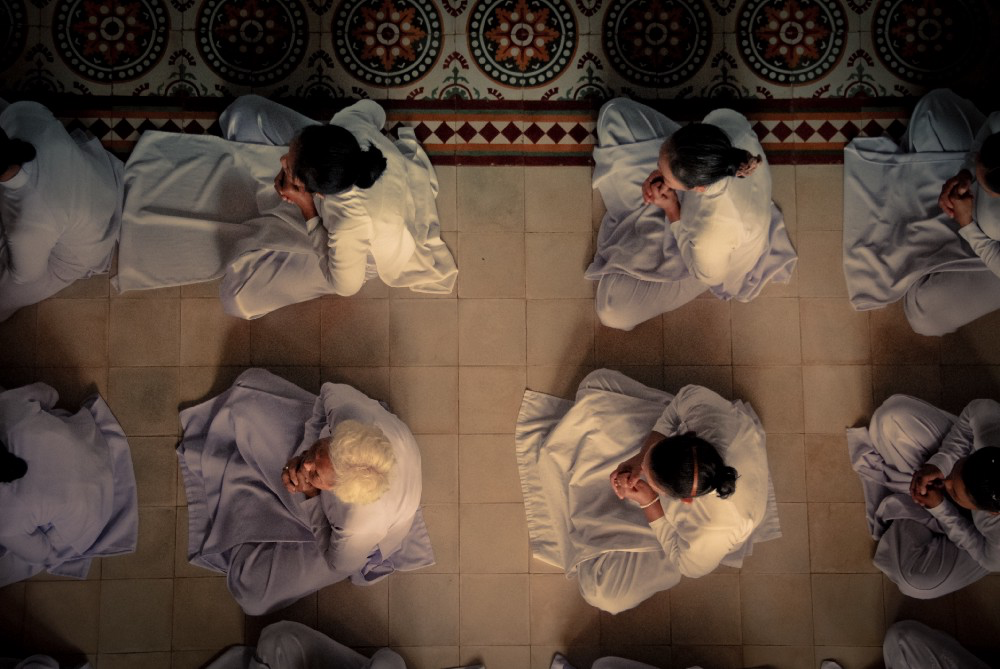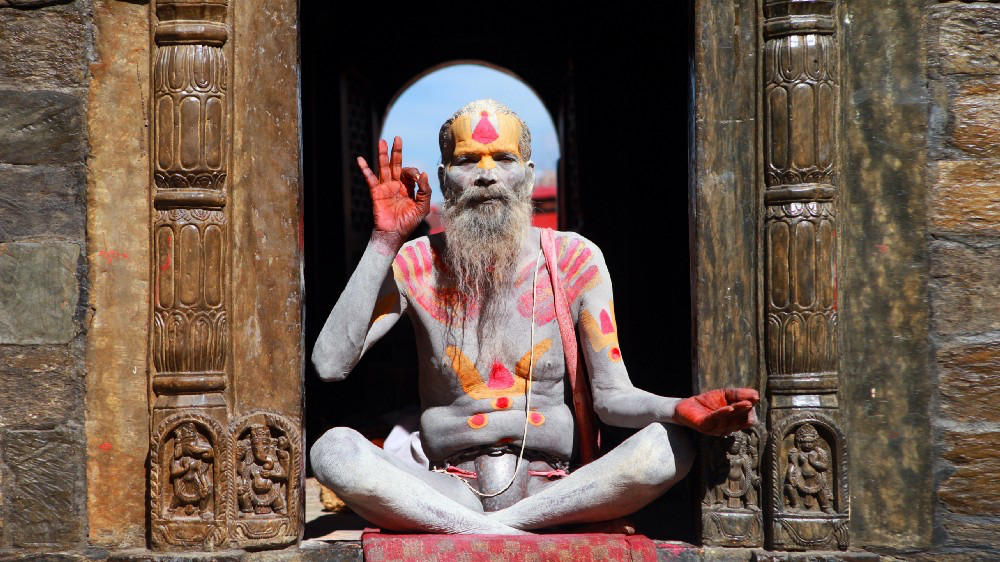Silent meditation retreats are growing in popularity. It seems more of us are taking time to reset and get away from the daily routines. And rightly so, looking after our mental and emotional wellbeing has never been so important given the speed with which we live our lives.
Chances are there is at least one person in your circle of family or friends who have been to a “vipassana” retreat. Or maybe you read or heard about it in the media. Whatever your source might be, you are curious enough to want to experience it by yourself.
This first step, to actually go to a retreat, takes a lot of courage and strong willpower. You are most likely at the beginning of your self-exploration journey.
There might be a voice in your head that doubts and asks why not go on a beach holiday instead. Take notice and smile at it.
Stick to your goal and before you know it the initial challenges will be past you. Trust me, it’s worth it.
Having spent a considerable amount of time in silent retreats, people often ask me what to expect. What happens when you enter the alien world of 10-days of silence? Here I put together a list of key themes that will prepare you for the experience and allow you to benefit from it from the minute you get to the retreat.
Carefully choose your retreat
Doing a little bit of research in advance will pay off.
The most popular meditation retreats at the moment are those taught by S.N. Goenka. Mr. Goenka is responsible for making the term ‘vipassana’ synonymous with meditation in the Western world today. The centres are spread all over the world so you have an abundant choice of where to go.
Depending on the location, there either will be a waiting list or not. I secured a place on their course in Indonesia less than one month before the start date. Try Java island. For many European and North American locations, you will have to get a little organised. Send an application a few months in advance and you will likely to have a spot guaranteed. Courses are run by volunteers and rely on participants’ donations to keep them going.
If planning isn’t your thing and you happen to be in South East Asia then consider meditating there. Many retreat centers in Thailand don’t require advanced registration.
You turn up on the first day and if there is space you will be more than welcome to stay. Try Thai forest monasteries in Chang Mai, Pai or Surat Thani. They are a great opportunity to experience a simple way of life of a Theravada Buddhist monk. The settings are tranquil and in the midst of nature. You also get to learn basics of Buddha’s teachings if this is of interest to you.
But you don’t have to travel far to attend a retreat. Explore your local area.
You might be surprised how many meditation centers there are near your work or home or a short train ride away. You will not only save time and money but will also begin to engage with the local community of fellow meditators. That’s a very important aspect if you are seriously thinking of continuing with the practice once the retreat is over.
Read the daily schedule
I am yet to come across a retreat that doesn’t publish their daily schedule online. It’s there for a very good and simple reason, for you to read. Familiarising yourself with it will help you make a conscious choice which retreat is best suited for your needs. It will also make you aware of what you’re in for.
Most centers will have you up on your feet at 4 am and lights will go off at 9 pm. If sleep is an issue (like it was for me when I attended my first ever retreat), then even that extra half an hour in the morning can make a difference. There are places where you can ‘leisurely’ stay in bed until 4.30 am, but they are rare (try Koh Samui, Thailand). After all, it’s all about following a monastic-like discipline and making the best use of early morning hours.
It is said that Buddha got enlightened at dawn. Try to remember this when you’re having trouble getting up, it might just make your morning meditation a little bit easier.
Some places will have a morning yoga class, usually before sunrise. It’s a great way to get your body energized for the day ahead. The exercises will be gentle and suitable for all ages, enough to get your body prepared for extended periods of stillness. Expect mindful presence through movement rather than dynamic Ashtanga. Usually, there is an option to do your own yoga practice if that’s your preference.
Just sitting down or maybe also a bit of walking?
If this is your first meditation retreat then please consider how much sitting down you are prepared to do each day. Goenka’s retreats, for example, are based on formal, sitting practice. Ten hours of it every day. This could be a little too much for people without an established meditation routine. That’s not to say you shouldn’t give it a try, just be prepared and know that you have alternatives.
It is easy to find places that will incorporate walking meditation into your day. They will also teach you how to meditate in all daily situations, such as listening to others, eating or doing household chores. After all, once the retreat is over it’s important to carry on with your practice. Dedicating one or two hours each day to sit down cross-legged might soon become impractical. It’s good to know how to be present and observe your mind in all situations. It will allow you to continue the momentum after the retreat.

Meditation style
I didn’t start with this aspect of a retreat because if you are new to meditation then this shouldn’t be your worry at all.
An average length of a retreat is ten days. This might seem long but is only enough to give you a taster of any particular meditation technique.
Most centers teach breath-based meditation. It is an excellent method to start observing what goes on in your mind and develop concentration practice.
That’s not to say that if you’re drawn to a particular tradition that you shouldn’t give it a try. Go out there and explore. Zen, Mahayana and Theravada Buddhism centers are excellent options. It’s only once you try a few meditation methods and meet a few teachers that you will be able to get a good understanding of what the meditation world is about. Then you can start making conscious choices for yourself. It’s all about personal experience. There is a limit to what you can learn by listening to others and you will soon start to realize this.

Photo by Emily KenCairn of Apiary Studioon Unsplash
Don’t worry in advance
By now you have selected the retreat that best suits your needs. You have a few weeks or months to go before it starts. What now?
It is tempting to start imagining what the experience will be like.
‘I will sit in perfect stillness during every session’. ‘I will follow my breath in and out without losing myself in thoughts’. ‘I will not think about work’. You’re creating unnecessary expectations and putting pressure on yourself. And you’re not even there yet. Stop.
Or you begin to worry about how you will adjust to being silent for so long. What about eating only two meals per day? What about work emails? Who will take care of these?
First, relax. The world will not come to a sudden stop if you’re not available to immediately reply to emails. If you have a demanding job then it’s advisable to make necessary arrangements in advance. Let everyone know that they won’t be able to contact you. This way they won’t panic when they don’t hear from you and you won’t stress unnecessarily.
All these worries and expectations are nothing else but the workings of your own mind. The mind will come up with a long list of excuses why you cannot take time off. Notice them but don’t engage, stick through with the plan to get more presence in your life.
Take a long deep breath, yes do it now as you’re reading this. And now exhale. And again, a long breath in and a slow relaxed exhale. Relax and smile, you are going to a meditation retreat no matter what. You are taking an important step in looking after your wellbeing and nothing can stop you now.
Pack small
Take only what is necessary. You are trying to declutter your mind and this is always easier to do with less physical things around you.
Nobody will judge you if you don’t have make-up on or if your hair isn’t perfectly straight. Take loose, comfortable clothes and a meditation pillow if you have one. A torch might be a good idea so you can find your way around in the mornings. Leave books, laptops, and diaries at home, you will not be able to use them.
Travel and arrival
Make good use of your travel time and start to get into the right frame of mind. Start to disconnect from your phone, notice the world around you.
Relax your body and start paying attention to your breath. If you are traveling to the retreat center alone then this is a good opportunity to start the journey inwards. This way when you arrive at your destination you will already be calm and your mind will begin to quiet down more easily.
During registration, there will be time to get to know other participants. It’s up to you if you choose to speak with other people or not and to what extent. I find that it’s nice to get to know some fellow participants before the silence starts. After all, you will all be on this journey together, supporting each other, just without talking.

Enjoy
Meditation retreats are unique and personal experiences. In everyday life we put our own filter on everything, liking and disliking in ways unique only to us. It’s no different with retreats. There will be easy aspects of it, there will also be parts you will struggle with. It’s the nature of meditation retreats, they are designed to make you face your habits and thinking patterns.
It’s so important to go in with an open mind. This is the only golden rule, always remember it, especially when the going starts to get tough in there.
Try to relax and not to take the experience too seriously. Become friends with your mind. You can even have a little silent giggle at some of the things it comes up with.



